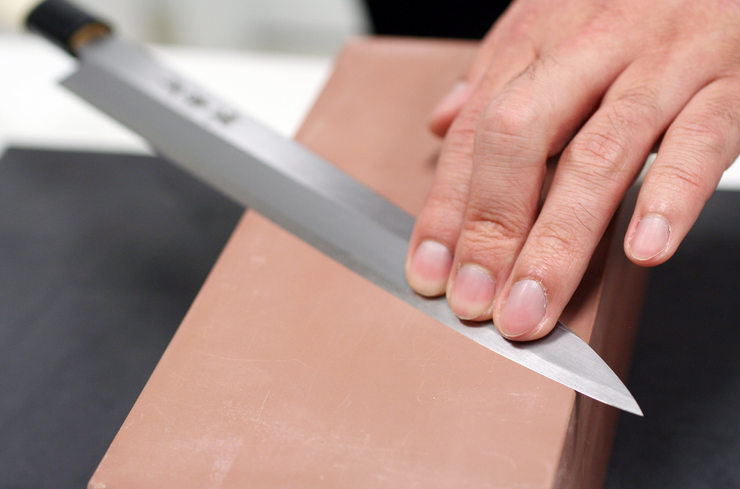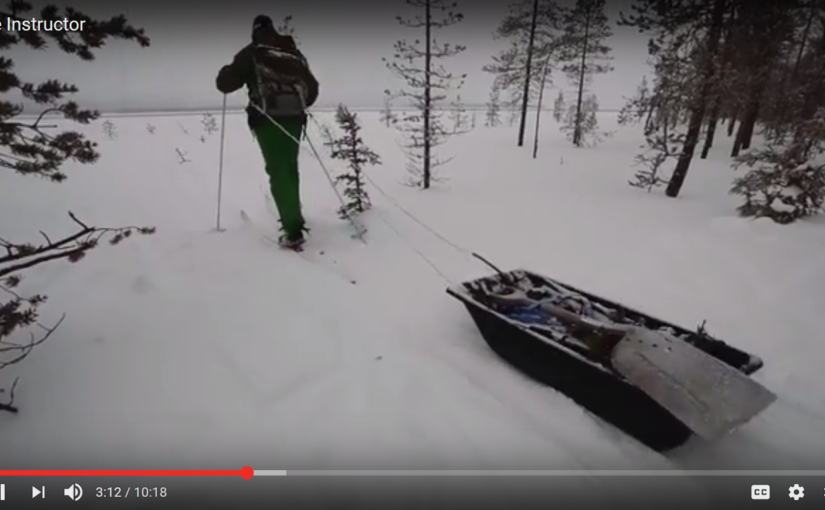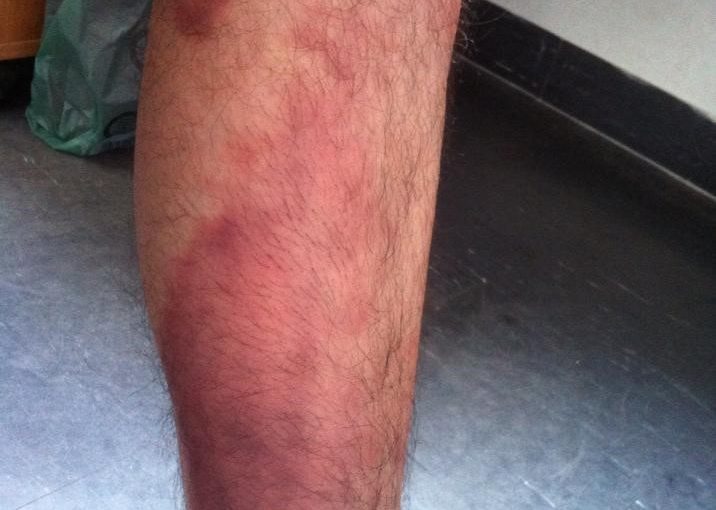Let me tell you briefly about me. My name is Selco and I am from the Balkans region, and as some of you may know it was hell here during a civil war from 1992-95. For One whole year I lived and survived in a city WITHOUT: electricity, fuel, running water, real food distribution, or distribution of any goods, or any kind of organized law or government.
The city was surrounded for One year and in that city actually it was a true ‘Shit Hit The Fan’ situation. We were all thrown into this with no preparation, and found often our allies were our enemies from one day to the next…
Violence is something that people like to talk about, give theories and opinions, but at the same time few of us experience the real ‘deep’ face of violence, being trapped in a prolonged a deteriorating situation.
You may have experienced bar fights, or home invasions maybe, shooting somewhere and similar, and those events can be life changing situations for sure (or life taking) but I am talking here about violence so large scale and long lasting that it brings something like a ‘new way of living’, overwhelming violence that demands a complete change of mindset.
I often hear, and I often agree, that violence cannot solve anything, and that violence only brings more violence, but when you are faced with a man who wants to kill you, you are going to have to probably kill him in order to survive.
I hope that, in this moment, you will not care for philosophy, humanity or ethics, and that you just going do what you have to do, and survive. Later you will cope with other things, it is how things work.
As I get older I realize more and more that violence is wrong thing, but in the same time I also realize that I have to be more and more ready and capable to do violence when the time comes.
It is paradox maybe, but again it is how things works, I do not like that, but it is what it is.
Violence and you
It is way too big topic even to try to explain it in one article, but some things I must try to show you here.
There is a man, let’s say we are talking about you here. An average citizen, a law abiding person, and suddenly you are going to be thrown into a (prolonged) situation where you are going be forced to watch and use exceptional levels of violence.
Do you think that you are going to be able to „operate“ in those conditions with the mindset you had from the time where you were average law abiding citizen?
No of course not, you will have to jump into the another mindset in order to survive.
Let’s call it survival mode.
In survival mode you’ll have to not to forget what it was like for you in ‘normal’ times, but you will have to push those memories aside, in order to operate in different mode – survival mode.
In real life situation that means for example that you ll maybe have to ignore panic, fear, smell, noises in the middle of an attack and do your steps in order to survive.
Maybe you’ll have to ignore the screaming dying kid next to you, maybe you’ll have to ignore your pride and run, or simply maybe you’ll have to ignore your „normal“ mindset and you going to have to kill the attacker from behind.
There is list of priorities in normal life, and there is list of priorities in survival mode.
Let just say that you using your different faces and „small“ mindset during your normal life and everyday business with different people around you.
Just like that, when faced with violence you’ll have to use different mindset, different face. Or another you.
Violence and experience
There is a strange way of thinking here for me, but since I have live through the time when huge number of people did not die from old age, rather from violence, I have experience in this subject. So here are few thoughts.
Experiencing violence over a prolonged period of time does not make you superman, actually in some way make you crippled man, man with many problems, psychological and physical.
But if I put myself in way of thinking that I am in better position now then people who died next to me, or in front of me. You may call me a winner or survivor but many days that ‘title’ sounds very hollow.
Am I lucky man-yes, am I happy man – no.
But we are not talking in terms of quality of life, we are talking in terms of surviving or not.
Ethics, psychology and everything else here are matter for couple of books to be written, and even then you are not going say anything new, it is like that from beginning of the mankind. What is more important about having experience in violence is that you simply KNOW how things are working there. In lot of things you simply know what you can expect. You know what chaos is, best way of dealing with it, you know what it takes to do things.
Preparing for violence
Again nothing like real life experience, when you experience something like real violence you keep that in yourself for the rest of your life. What is best next to that? – other people’s real life experience.
So is it make sense to read about other folks real life experience?
Of course, read a lot about that.
Training (physical) yourself is great thing. You’ll train to get yourself into the state that you are (physically) ready for hard tasks. So of course it makes sense to do that.
But training yourself mentally can be a hard thing.
You actually can only guess how it is going to be, how it is going to affect you.
I can tell you that it is hard, chaotic, I can describe you a situation, but can I bring you the feeling of terror in your gut when you feel that you are going to shit yourself? Can I give you smell of fear, smell of decaying body? Can I give you feeling when you realize that „they“ are coming for you?
No of course I cannot. You can read stories and real life experiences and based on that you are going to „build“ your possible mindset for violence situation.
You are going to build your „survival mindset“.
But there is a catch there. If you build it too firm, too strong, and then there is SHTF and everything that you imagined doesn’t fit the given situation or scenario and you are still pursuing and acting in the way that you imagine dealing with it you are going to have serious problems.
The situation will not adapt to your mindset; the situation will kill you if you are sticking too firm to your plan when it is not working.
You simply have to adapt.
It goes for many situation, if your plan and mindset says you are defending your home until you die, you are going to die probably.
Whenever I heard people saying „I’ll do that when SHTF „ or „I’ll do this when SHTF“ I feel sorry for them.
When SHTF you will adapt, and change your given plan accordingly to situation.
It is same with violence.
Violence is a tool that you going to use according to the situation. It is a tool, not a toy.
Now to finish with a final thought. It can sound, from what I have written, that a SHTF situation is like a Mad Max movie. Everyone running around killing, hurting doing things with no consequences. In fact, this fantasy of a world ‘Without Rule of Law’ (WROL) is a big discussion in some circles.
For sure regular ‘law’ has gone. There are no ‘authorities’ or courts as we know them to deter or punish, BUT, during a SHTF situation you will find….
It is (especially in the beginning) like everything is possible, law is gone, you could go outside and see people looting stores, groups organizing (by street, or other facts like same job in company for example) trying to either defend part of the town, or bring more chaos just for fun, sometimes you could not say what, both could bring violence and death to you. Over time the ‘violence’ becomes more organized and ‘structured’ to start to achieve certain specific goals (although there is always ‘chaos’ as well).
After some time you look at violence you encounter in two ways. Violence happening outside your group, or inside your group (It is quite certain you will need to be in some sort of ‘group’ to stand any chance of surviving).
Outside your Group, you just wish to be very ‘small’, invisible after some time, not pay attention to anyone doing violence to others, because, quite simply you are still alive, and want to stay that way. In terms of “I am still alive, I do not care what they doing to that person, and how bad it is (your will and judging of good and bad is broken, you just care for your own life) it is like you care only for yourself while you are watching how others get killed, no matter that you feel that it is going to come to you in the end (violence) you just care for yourself.
Leaders of the “bad” group (gang) have best chances to stay leader if members fear him, so in fact he is most dangerous, vicious, sick bastard, nothing like a “reasonable” man. (Competition is huge in SHTF) Instilling discipline (through fear) and enforcing ‘your’ rules are paramount to holding your position as leader.
Various groups were interacting with the outside world and each other through fighting, exchange information, trading goods etc, but every group were more or less closed world, with trust only for those inside the group.
Forming of a group was quick mostly, because nobody expected this situation was going to happen, and so were not prepared, but very quickly were literally ‘fighting for survival’. Any problems were solved “on the way” (bad members, not skilled, not obeying etc.) Sometimes through discussion and agreement, but always with the threat of violence as an option.
To finish, and to educate, as opposed to shock you. Many folks cannot think to clear about the level of violence I am describing being involved in. Maybe you think SHTF is just like ‘Black Friday Shopping’ but every day. So let me just give examples of the how far the world I lived in descended from ‘normal’. Remember this was a regular city, in a nice country, in Europe, less than 25 years ago…
-People who never used violence before, doing some ‘hard’ violence: normal people, dads and mums, killing folks in order to save their families.
-Certain groups of people who looks like they are just waited for the SHTF so they can go out (“crawl beneath some rock”) so they can fulfill their own fantasies about being kings of the town, imprisoning people, raping women, torturing folks in the weirdest ways…
-Strange groups organizing in whatever the cause they choose name it, again only to gain power in order to have more resources (sometimes simply “gangs” of 50 people, sometimes whole militias of thousands people) through terror over other people or group of people.
-Irrational hate towards “other” (whoever “other” could (or might) be (other religion, group, street, town, nation) because it is very easy to manipulate groups of people through hate and fear (from and towards “others”), if someone manipulate you that your kid is hungry because “others”, he can do a lot with you.
Real life examples I saw:
-People being burned alive inside their homes (And people ‘enjoying’ watching this)
-Private prisons were made where you could go and torture other folks for fun, or rape women as a “reward”
-Kids over 13 or 14 years of age were simply “counted” as grown up people, and killed as enemy
-Humiliation of people on all different ways in order to break their will, for example forcing prisoners to have sex between same family (like father and daughter and similar)
-Violence was everyday thing, you could go outside and get shot not because you were ‘enemy’, but only because sniper on other side want to test his rifle









